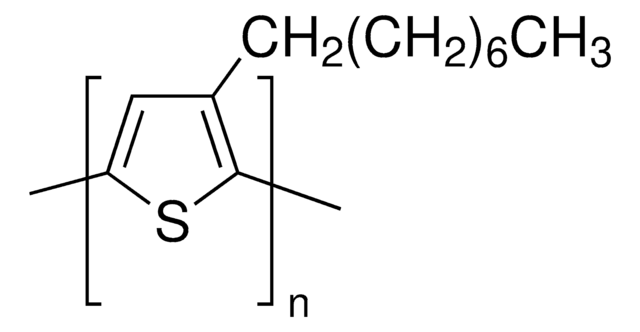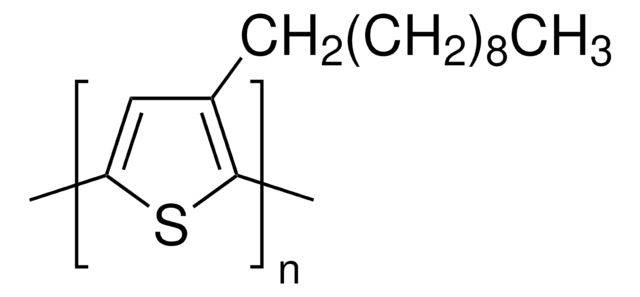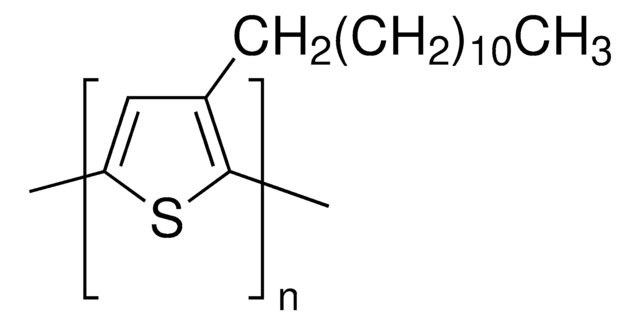682799
P3OT
regioregular, electronic grade, 99.995% trace metals basis, average Mn ~25,000
Synonim(y):
Poly(3-octylthiophene-2,5-diyl)
About This Item
Polecane produkty
Materiały
black
klasa czystości
electronic grade
opis
Band gap: 1.7 eV
Próba
99.995% trace metals basis
Postać
solid
masa cząsteczkowa
average Mn ~25,000
mp
198-211 °C
Energia orbitalna
HOMO -5.25 eV
LUMO -3.55 eV
Wydajność urządzenia OPV
ITO/PEDOT:PSS/P3OT:PC61BM (1:2)/LiF/Al
właściwości półprzewodników
P-type (mobility=10−4 - 10−1 cm2/V·s)
Opis ogólny
Zastosowanie
Rechargeable battery electrodes, electrochromic devices, chemical and optical sensors, light-emitting diodes, microelectrical amplifiers, field-effect transistors and non-linear optical materials.
Used in organic field-effect transistors and in polymer-based solar cells.
Cechy i korzyści
Kod klasy składowania
11 - Combustible Solids
Klasa zagrożenia wodnego (WGK)
WGK 3
Temperatura zapłonu (°F)
Not applicable
Temperatura zapłonu (°C)
Not applicable
Środki ochrony indywidualnej
Eyeshields, Gloves, type N95 (US)
Certyfikaty analizy (CoA)
Poszukaj Certyfikaty analizy (CoA), wpisując numer partii/serii produktów. Numery serii i partii można znaleźć na etykiecie produktu po słowach „seria” lub „partia”.
Masz już ten produkt?
Dokumenty związane z niedawno zakupionymi produktami zostały zamieszczone w Bibliotece dokumentów.
Klienci oglądali również te produkty
Produkty
The application of conducting polymers at the interface with biology is an exciting new trend in organic electronics research.
Organic materials in optoelectronic devices like LEDs and solar cells are of significant academic and commercial interest.
Intrinsically stretchable active layers for organic field-effect transistors (OFET) are discussed. Polymer structural modification & post-polymerization modifications are 2 methods to achieve this.
Novel Graphene‑Based Nanostructures Production, Functionalization, and Engineering
Nasz zespół naukowców ma doświadczenie we wszystkich obszarach badań, w tym w naukach przyrodniczych, materiałoznawstwie, syntezie chemicznej, chromatografii, analityce i wielu innych dziedzinach.
Skontaktuj się z zespołem ds. pomocy technicznej









